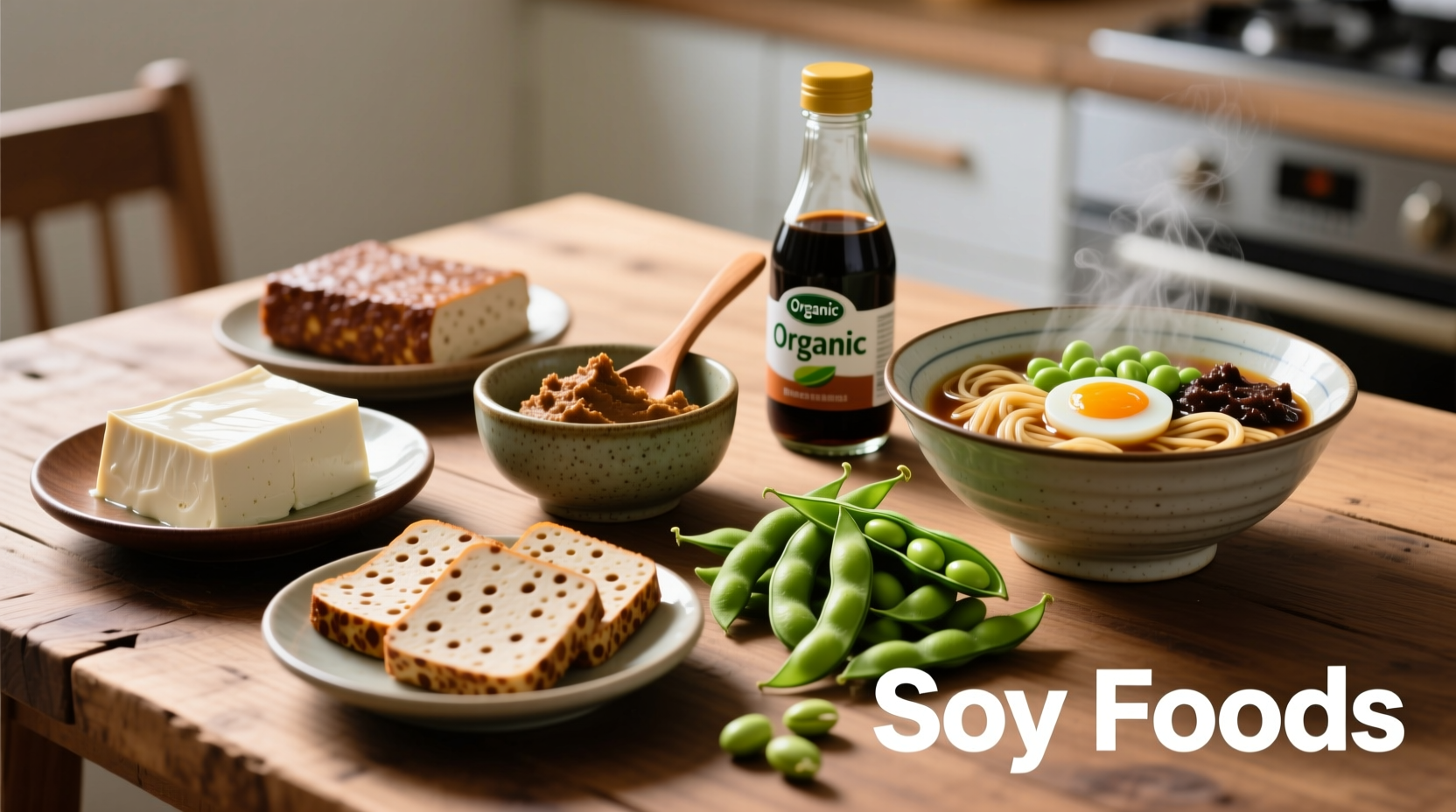Whether you're navigating a soy allergy, following a soy-free diet, or simply curious about where this versatile legume hides in your pantry, understanding soy's presence in foods is essential for making informed choices. Soybeans rank among the top nine food allergens according to the FDA, making awareness critical for safety and dietary planning.
Most Common Soy-Containing Foods You Should Know
Many soy products appear directly in ingredient lists, making them relatively easy to identify. These staples form the foundation of soy consumption worldwide:
- Tofu (also called bean curd)
- Tempeh (fermented soybeans)
- Soy milk and soy-based beverages
- Edamame (young soybeans in pods)
- Miso paste (fermented soybean paste)
- Soy sauce and tamari
- Natto (sticky fermented soybeans)
- Soy protein isolate and concentrate
These foods represent the most recognizable soy sources, but they're just the beginning. Processed foods often contain soy derivatives that aren't immediately obvious to consumers checking ingredient labels.
Hidden Sources of Soy in Processed Foods
Soy derivatives serve multiple functions in food manufacturing—acting as emulsifiers, thickeners, protein boosters, and texturizers. This makes soy one of the most pervasive hidden ingredients in packaged foods. The American College of Allergy, Asthma, and Immunology identifies over 20 soy-derived ingredients that commonly appear in processed items.
| Common Name | Technical Name | Foods Where Found |
|---|---|---|
| Soy Lecithin | Lecithin (E322) | Chocolate, baked goods, salad dressings |
| Soy Protein | SPI, SPC, textured vegetable protein | Meat alternatives, protein bars, cereals |
| Soybean Oil | Vegetable oil (when unspecified) | Fried foods, margarine, mayonnaise |
| Monosodium Glutamate | MSG | Asian cuisine, canned soups, snack foods |
This table illustrates how soy hides under various names across food categories. Food manufacturers frequently use soy derivatives because they're cost-effective and versatile, but this creates challenges for those avoiding soy.

Reading Labels Like a Pro: Spotting Soy Derivatives
When checking food labels, watch for these less obvious soy ingredients that frequently appear in processed foods:
- Hydrolyzed vegetable protein (HVP)
- Vegetable broth or vegetable gum
- Textured plant protein (TPP)
- Soy fiber
- Soy albumin
- Soy grits
- Soy starch
- Soy flour
The FDA requires that major allergens like soy be clearly identified on food labels, either in the ingredient list or through a "Contains" statement. However, highly refined soybean oil often gets exempted from labeling requirements as it typically doesn't contain soy protein that triggers allergies.
Context Matters: When Soy Becomes Problematic
Understanding soy's presence requires recognizing different contexts where soy matters:
- Allergy management: For those with soy allergies, even trace amounts in processed foods can trigger reactions. The CDC reports soy as one of the most common childhood food allergies.
- Dietary preferences: Vegans and vegetarians often intentionally seek soy-based proteins, while others following paleo or whole foods diets may avoid soy.
- Processing level: Whole soy foods like edamame offer nutritional benefits, while highly processed soy derivatives in junk foods provide minimal nutritional value.
- Cross-contamination: Facilities processing both soy and non-soy products may transfer soy proteins, creating risks for sensitive individuals.
Practical Strategies for Managing Soy in Your Diet
Whether avoiding soy or incorporating it intentionally, these evidence-based approaches help:
- Start with whole foods: Build your diet around unprocessed ingredients like fresh fruits, vegetables, meats, and grains to minimize hidden soy exposure.
- Learn alternative names: Memorize common soy derivatives to spot them quickly on ingredient lists.
- Contact manufacturers: When uncertain about a product's soy content, call the company directly for clarification.
- Prepare meals at home: Cooking from scratch gives you complete control over ingredients.
- Carry safe snacks: Always have soy-free options available when traveling or eating out.
For those with soy allergies, the Food Allergy Research & Education organization recommends carrying epinephrine auto-injectors and informing restaurants about your allergy when dining out.
Soy in Global Cuisines: Cultural Context
Soy plays different roles across culinary traditions. Asian cuisines incorporate soy more extensively through staples like soy sauce, miso, and tofu. Meanwhile, Western processed foods often use soy derivatives as functional ingredients without highlighting them. Understanding these cultural differences helps when exploring international recipes or dining at ethnic restaurants.
When traveling or trying new cuisines, don't hesitate to ask about soy content—many restaurants now accommodate common dietary restrictions with greater awareness than in previous years.
Final Thoughts on Navigating Soy in Foods
Knowledge remains your most powerful tool when managing soy in your diet. By understanding both obvious and hidden sources, learning to read labels effectively, and implementing practical strategies, you can make informed choices that align with your health needs and dietary preferences. Remember that whole soy foods offer nutritional benefits for those who can tolerate them, while processed soy derivatives require more careful consideration.











 浙公网安备
33010002000092号
浙公网安备
33010002000092号 浙B2-20120091-4
浙B2-20120091-4